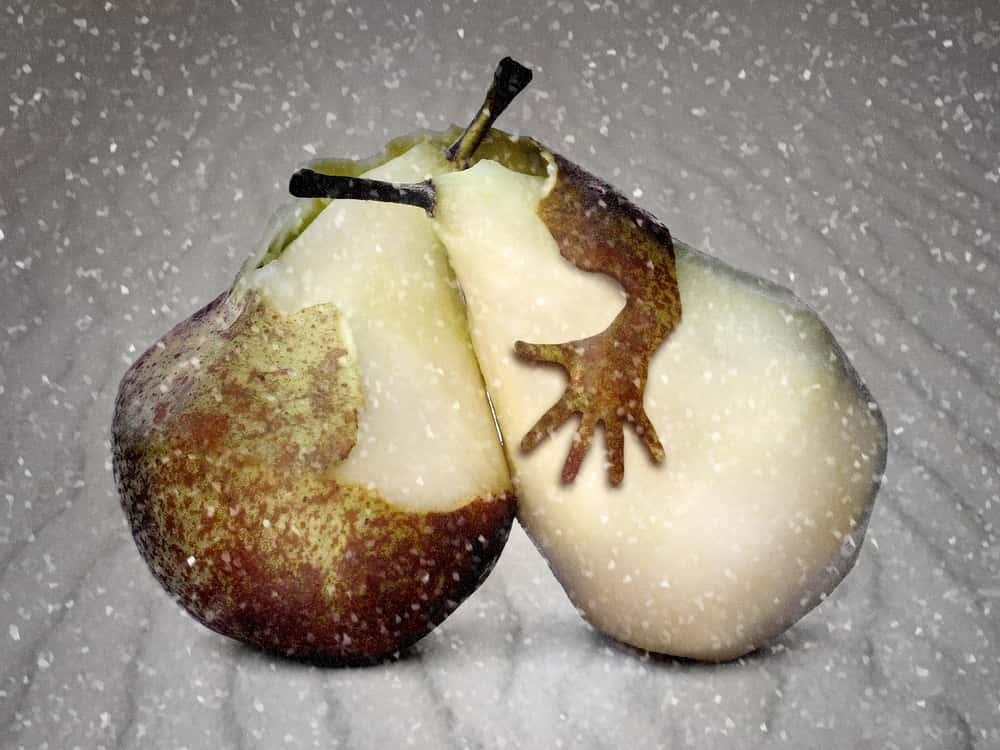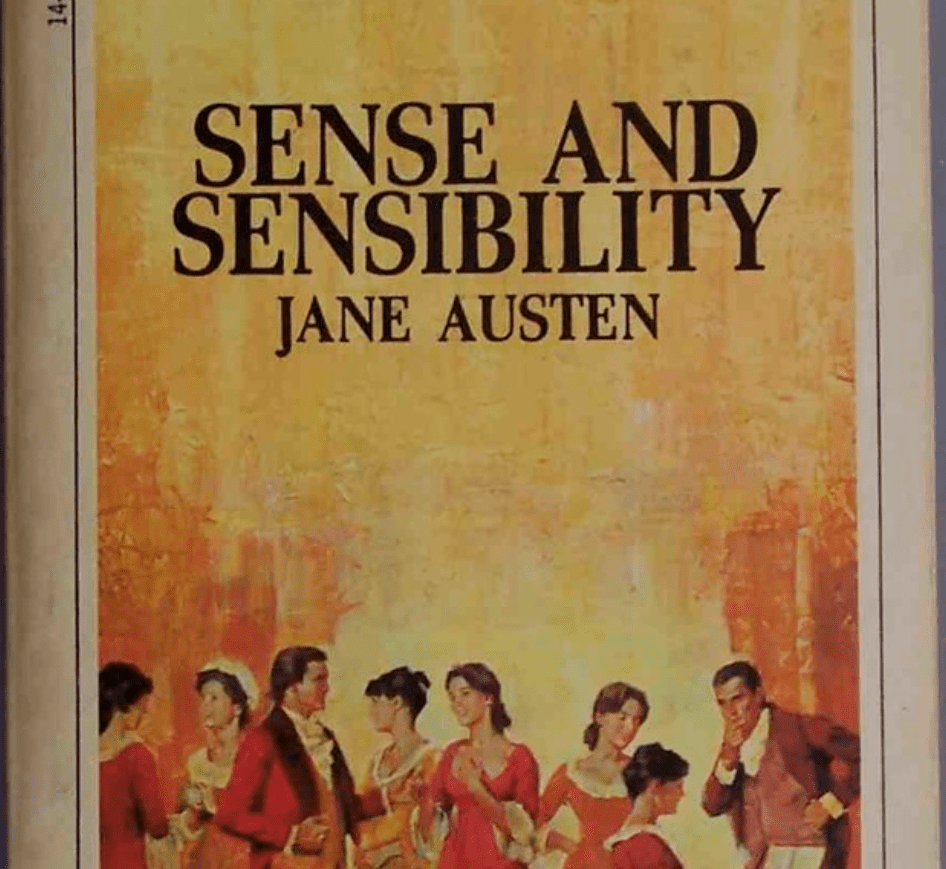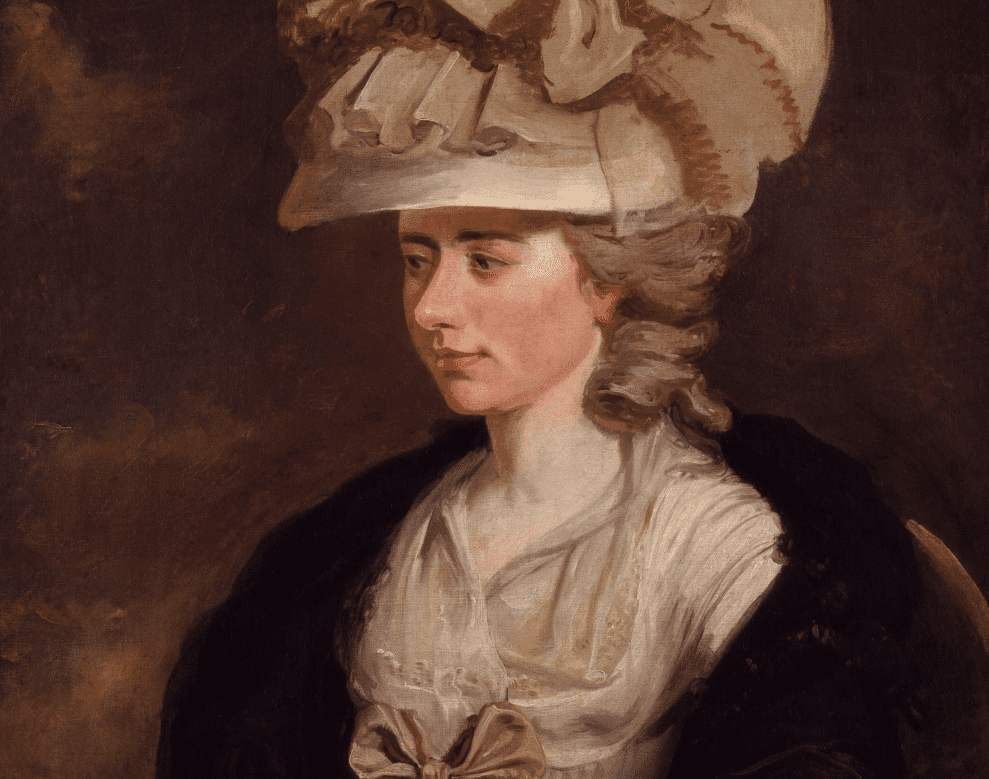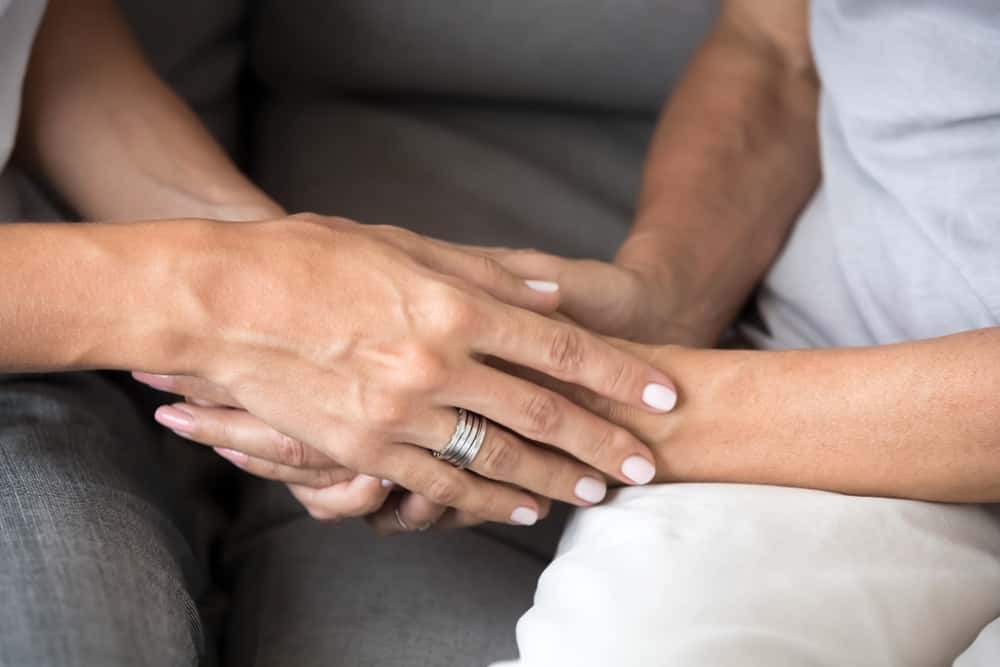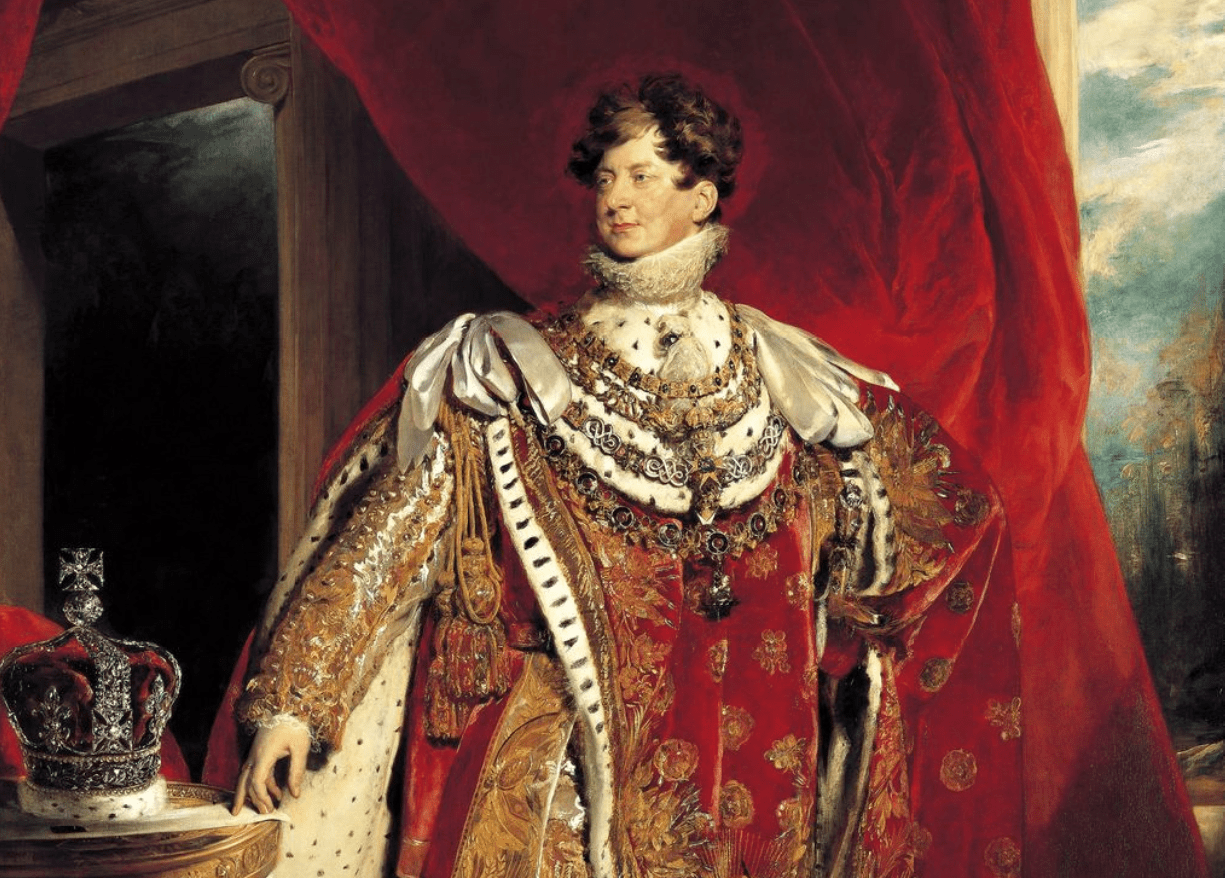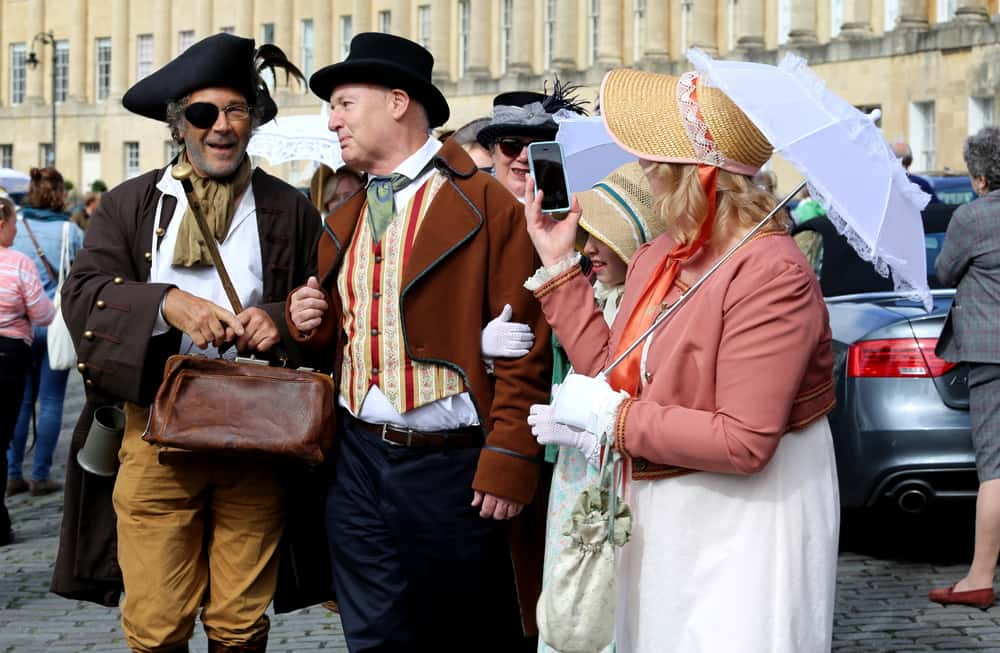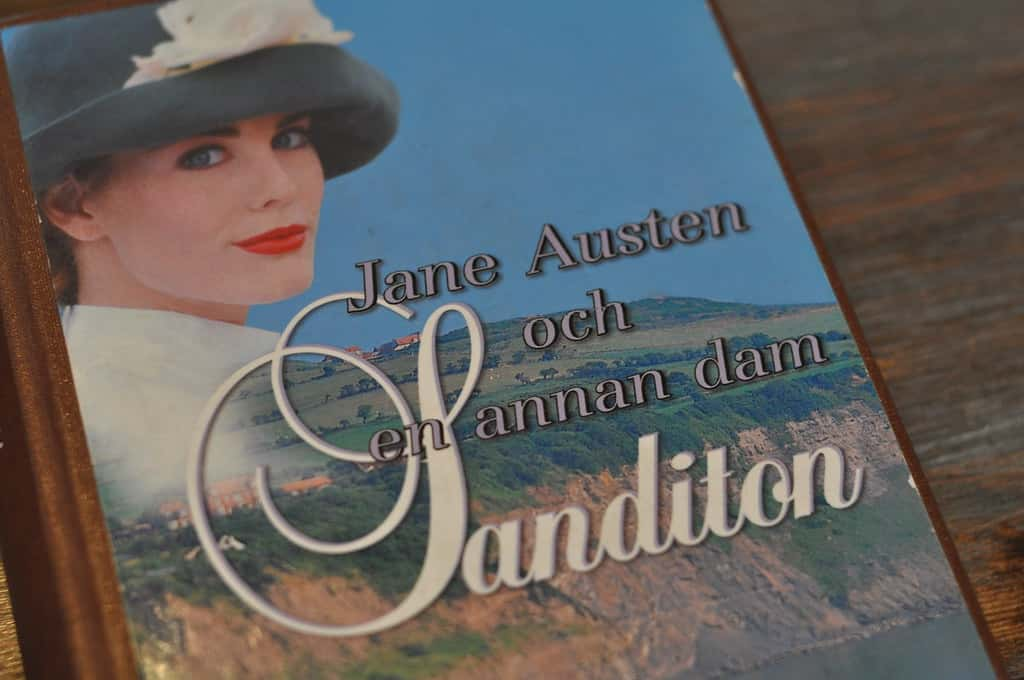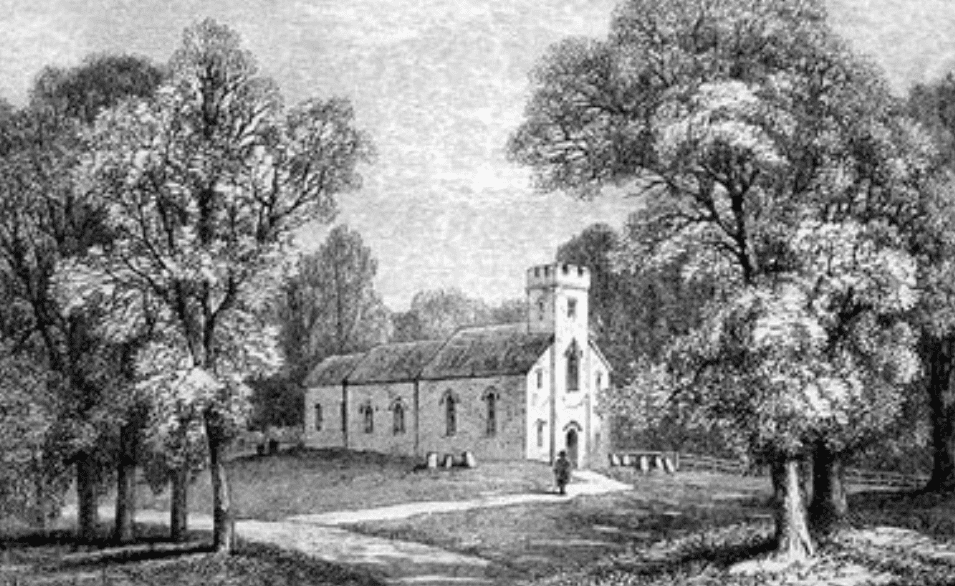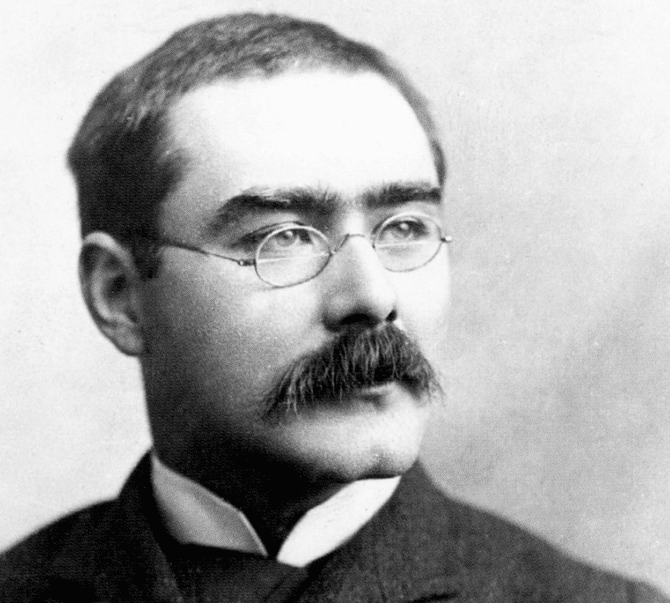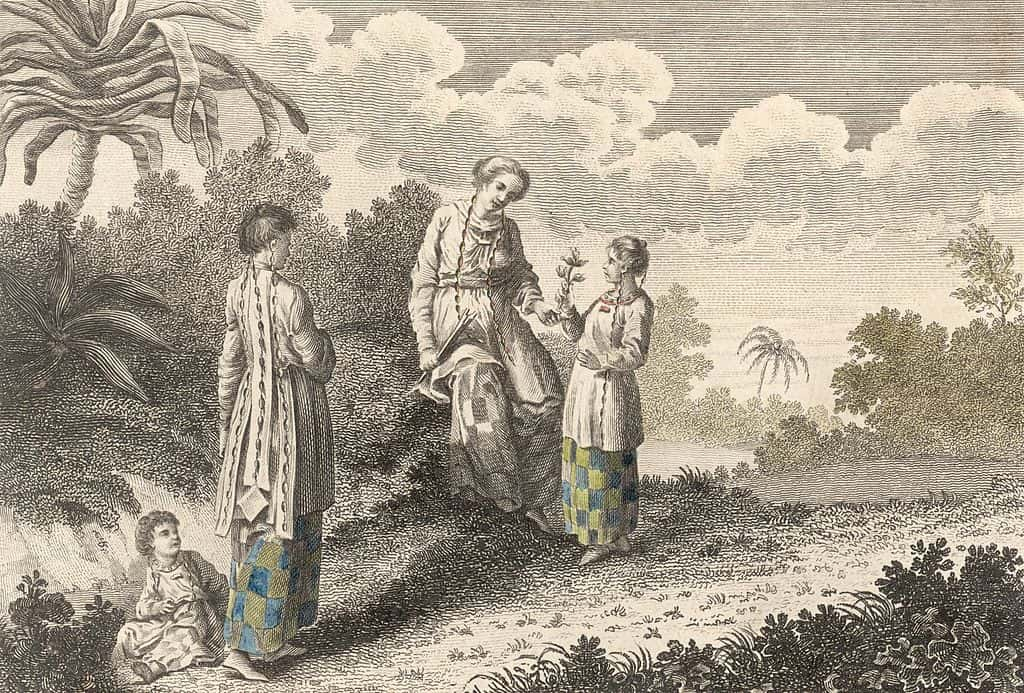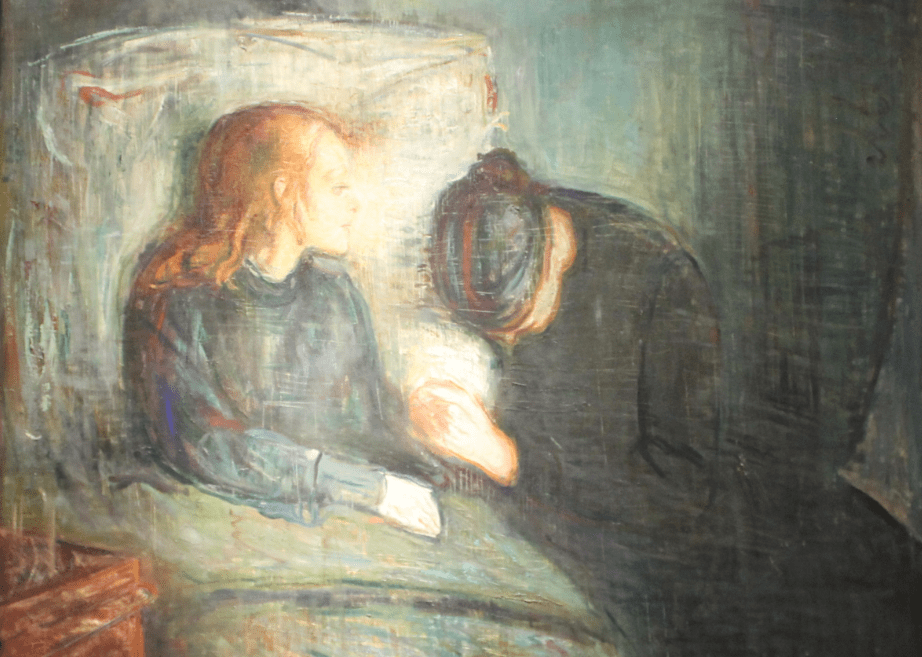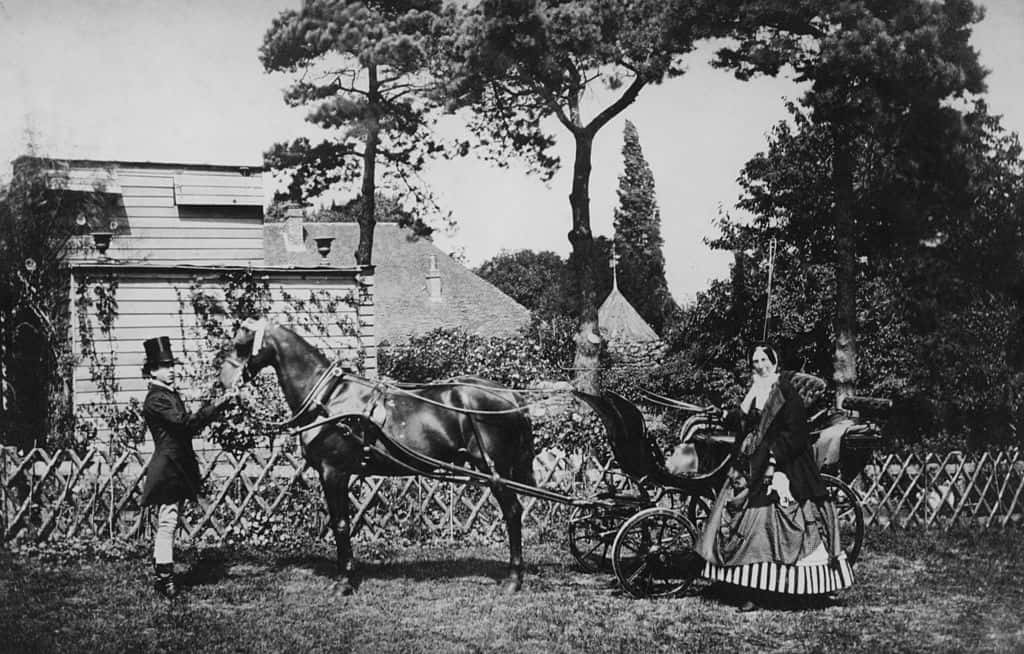"Vanity and pride are different things, though the words are often used synonymously. A person may be proud without being vain. Pride relates more to our opinion of ourselves; vanity, to what we would have others think of us." - Jane Austen
Jane Austen was an English author from the Georgian era, best known for balancing romance, biting irony, and astute social commentary in her written works. She was born on December 16, 1775 in Steventon, Hampshire, England, where her father was a rector (preacher) in a rural community. Her novels grew in popularity towards the latter half of the 19th century, with Pride and Prejudice, Sense and Sensibility, and Emma all considered literary classics.
Pick up your quill and fasten your bonnet: here are 46 sensible facts about the inimitable Jane Austen.
Jane Austen Facts
1. Seven of Eight
Jane Austen was the seventh of eight children, with six brothers and just one sister. Even with so many children, the family was said to be extremely tight-knit. Austen enjoyed especially close relationships with her father and her sister Cassandra.
2. Love of Learning
Luckily for Austen, her father was a scholar who had no problem allowing his daughters to learn. While Austen's formal education at boarding school primarily consisted of feminine studies such as French, music, and dancing, her real education came from the extensive collection of literature that her father kept in his library.
3. A Woman of Standing
Like the happy couples in many of Jane Austen's novels, her parents came from different class backgrounds. Austen’s mother Cassandra Leigh had aristocratic roots and was related to Lord Leigh of Stoneleigh Abbey, as well as the first Duke of Chandos, and the prestigious Wentworth family. Technically, marrying George Austen, a clergyman was a step down, but she was reportedly happy, so what did it matter?
4. Thwarted Romance
Does art imitate life? In Austen's novel Sense and Sensibility, one of the heroines, Marianne, falls madly in love with a man named Willoughby. Tragically, they cannot marry because he must make a better financial match. Something similar happened to Austen, when she also suffered heartbreak due to her lack of wealth.
When she was a teenager, Austen met the Irishman Tom Lefroy. The young couple flirted but Lefroy stood to lose his inheritance if he married a girl like Jane, who was of comparatively low social standing. Hearing of Lefroy's interest in Austen, his aunt Anne Lefroy, who was a close friend of Jane’s, made sure he left the country before it could go any further. How heartbreaking!
5. Rejected!
When Austen first wrote First Impressions, the early version of Pride and Prejudice, her father George took the book to a publisher in London for evaluation. The publisher rejected the book without even reading it. Totally unfair, but at least Austen got the last laugh when it was eventually published!
6. By a Lady
When Austen’s works were originally published, it was with total anonymity. The byline of Sense and Sensibility simply read “A Lady” and her other works were credited as “by the author of…” Critics believe that Austen chose to be anonymous because writing was viewed as a man’s work and most female authors wrote under the cloak of anonymity. But not to worry: after Austen's death, brother Henry ensured that she was properly identified.
7. Finding Her Voice
Throughout the 1790s, when she was a teenager, Austen would record her early works in bound notebooks. A talented and precocious writer, Austen began to demonstrate her own sensibilities as a novelist early on. Love and Friendship was a parody of romantic novels written as a series of love letters, while her next work, The History of England, was a 34-page parody of historical writings that included illustrations drawn by her sister.
Scholars call these early writings Austen's "juvenilia" and they are notorious for being bawdy, energetic, and riotously silly. One story features three sisters mercilessly manipulating each other so that they don't have to marry the ugly single man in the neighborhood. Another features a fictional version of Austen's sister Cassandra running around town, stealing ice cream, and running away without paying carriage-drivers.
8. Is That Her?
Very few genuine portraits of Austen actually exist which has led to many arguments over what she actually looked like. The Rice portrait allegedly portrays Austen at 13 or 14-years-old, but there is some disagreement over whether or not it’s really her. There are only two portraits that we know are truly of Austen, and both are by her sister Cassandra. One features a cross-looking woman in Regency dress, while the other features an ever mysterious Austen facing away from her sister. All we can see is a bonnet!
9. A Royal Connection
In 2011 it was revealed that Kate Middleton, Duchess of Cambridge, is a distant relation of the authoress. According to Ancenstry.com, they are 11th cousins, six times removed, with their common connection dating all the way back to the 15th century and Henry Percy, 2nd Earl of Northumberland. That’s definitely something to brag about!

Sign up to our newsletter.
History’s most fascinating stories and darkest secrets, delivered to your inbox daily. Making distraction rewarding since 2017.
10. She Just Can’t Get Them Out of Her Head
In a memoir about the author, Austen’s nephew wrote that Austen continued to imagine her characters’ lives beyond the pages of her books. If anyone asked, she would happily reveal little snippets about what happened to some of her secondary characters, and particularly whether or not they ended up happily or not.
11. Starting Young
Austen was just twelve-years-old when she started writing stories, plays, and poetry, and by the time she was 23, she’d written first drafts for three of her six novels.
12. Regency Shine Theory
The term "Pride and Prejudice" wasn't coined by Austen. It's actually an homage to another woman writer: Frances Burney. Burney uses the phrase at the end of her novel Cecilia. And to solidify that Austen was a big fan of Burney: she's name-dropped by the narrator of Northanger Abbey and used as an example of a superb writer and thinker. Sisters supporting sisters!
13. Earning a Pittance
Despite being one of the most widely read authors in history, documents published by the Bank of England proved that Austen was grossly underpaid compared to her contemporaries. Mansfield Park was an instant bestseller, selling out its first printing in six months, but over her lifetime, she didn’t even earn as much as the average full-time fiction writer earns in a year. Talk about unjust!
14. A Sister's Pain
Jane Austen's sister Cassandra was very happily engaged to a man named Thomas Fowle. However, tragedy struck when Fowle went abroad to the Caribbean to earn some money and better provide for his fiancée. Fowle contracted yellow fever and died while he was away. After his death, Cassandra never married. This is part of why she and Jane were so close: as unmarried women, the sisters lived together for their entire lives.
15. Financial Straits
When Austen’s father died in 1805, Austen, her sisters, and her mother were left in quite a pickle. No money was left to provide for them, and they were forced to rely on the charity of various family members and live in a series of rented homes until they were finally able to settle at her brother Edward’s cottage in Chawton.
16. An Early Admirer
A recent discovery by a PhD student revealed that one of Austen’s earliest readers was the future King George IV of England. He purchased the book for 15 shillings from his booksellers just prior to the first public ad for the book. The prince apparently really liked her books and had one or two copies of each of her works.
17. Not Reciprocated
While the Prince Regent may have been a fan of Austen’s, she made it quite clear that she was not a fan of his. He was not exactly one of the more popular royals, and had a high disapproval rating from his subjects, including Austen. In 1813, she even wrote a letter speaking out against the prince and specifically, his many extra-marital affairs.
Even so, when the Prince Regent asks you to dedicate a novel to him, authors kind of have to comply. When Emma was released, Austen was all but forced to dedicate the novel to a man she vehemently disliked. But in characteristic Austen fashion, that dedication has gone down in history as profoundly sarcastic and borderline rude. Looks like she had the last laugh!
18. Top One Hundred
In 2002, the BBC broadcast a series called 100 Greatest Britons. The show was based on a television poll that ascertained who the British people thought were the greatest Britons in history. Austen tagged in at #70 on the list, just below William Caxton (who introduced a tiny, unimportant thing called the printing press to England) and soccer player Bobby Moore. She was however, one of the only female authors on the list, which is definitely a testament to her enduring popularity (and entrenched sexism).
19. Celebrating Jane
For ten days each September, fans of Jane Austen gather in Bath, England to celebrate the life and works of Jane Austen. It is the largest gathering of Jane Austen fans in the world, and the festival boasts over 80 events dedicated to the author. One of the most famous events is the Grand Regency Costumed Promenade, where participants dress in their Regency era costumes, and parade through the city accompanied by His Majesty’s 33rd Regiment of Foot, and led by the local town crier.
Why Bath, you wonder? Well, Austen lived there for part of her adult life and set sections of two novels in the city: Northanger Abbey and Persuasion.
20. The Unfinished Novel
Prior to her death in 1817, Austen was working on a new novel called Sanditon, which is set in an up-and-coming village on the Sussex Coast. Since only eleven chapters were completed, several continuators (writers who try to complete unfinished novels in the writer’s style) have attempted to finish it, including one also unfinished version by her niece Anna Austen Lefroy.
21. Changing With the Times
Sanditon features something that many 18th and early 19th century novels don't have: a character of color. A minor character named Miss Lambe is an heiress of West Indian descent.
22. Not So Sheltered
People naturally assume that because Austen lived in a small country village for the first 25 years of her life, she lived a quiet and sheltered life. That idea was reinforced by her nephew James Edward Austen-Leigh’s memoir, which portrayed her as the picture of the prim Victorian aunt. This, however, was not the case at all. Thanks to the time spent on her brother Edward’s estates, Austen had several opportunities to socialize with the landed gentry and gained a broad picture of the world through family and friends--and of course, extensive reading.
23. Not Just Chick Lit
Austen’s works are lauded for their romantic plots and are often viewed as being women’s novels, but many prominent men enjoyed them as well. British Prime Minister Harold Macmillan was one of her readers, and Winston Churchill said she helped him win WWII.
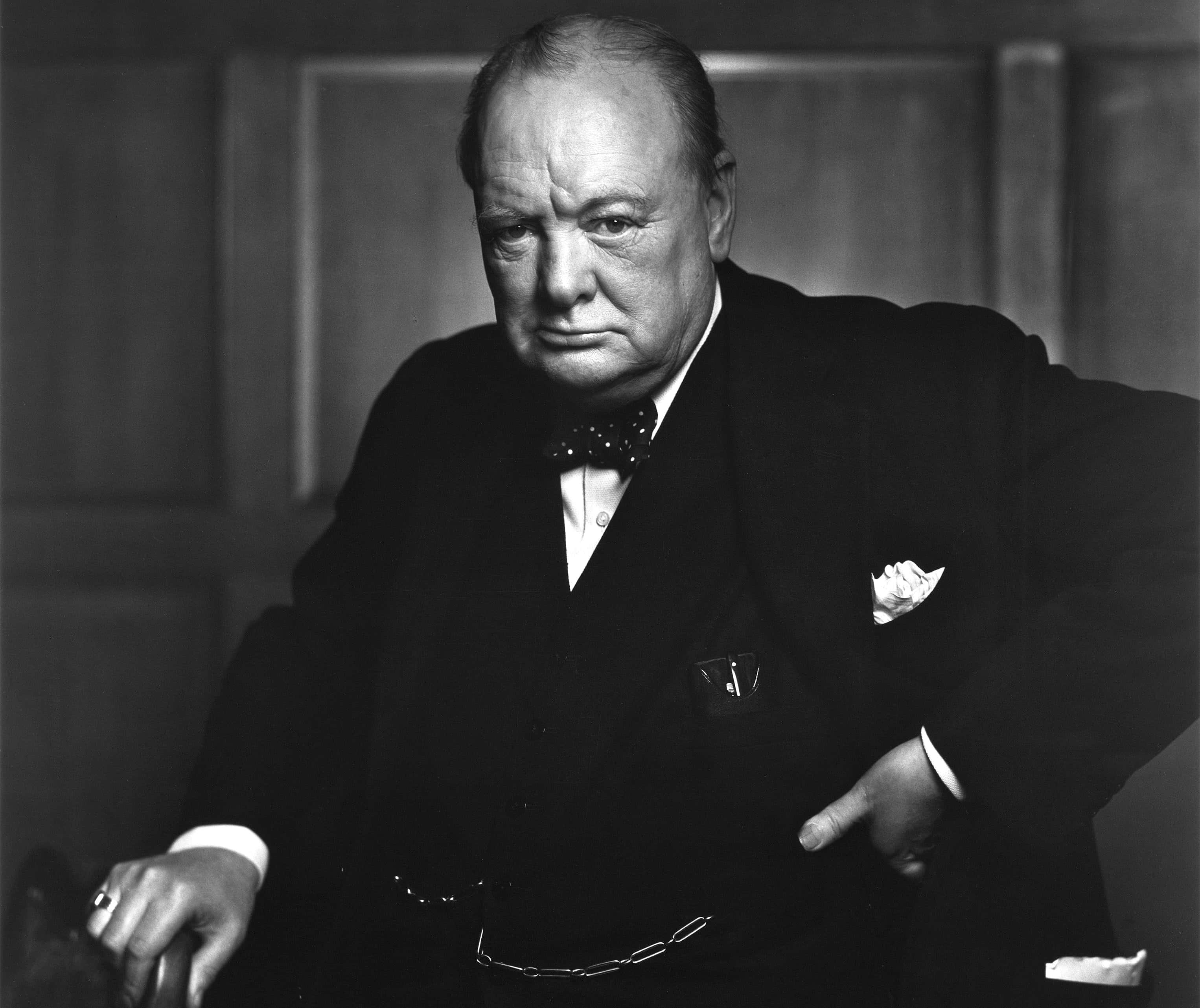 Wikimedia Commons, Yousuf Karsh
Wikimedia Commons, Yousuf Karsh
24. Respect of Her Peers
Austen also had fans in other prominent British authors and poets. Sir Walter Scott (author of Ivanhoe and Rob Roy) praised her in his journal, and Rudyard Kipling (author of the Jungle Book), read her aloud to his wife while their son was M.I.A. in WWI. After the war, he wrote a story titled The Janeites, about a group of British artillery soldiers in WWI who bonded over their appreciation of Austen, with one character even naming his rifle after the formidable character Lady Catherine DeBurgh.
25. Sisterly Love
Like Elizabeth and Jane in Pride and Prejudice, Austen was extremely close to her sister Cassandra. They wrote letters almost daily whenever they were apart, and voluntarily shared a bedroom. When Austen died, Cassandra was devastated, writing to her niece: “She was the sun of my life, the gilder of every pleasure, the soother of every sorrow.”
26. Second Thoughts
Austen never married, but she did accept a marriage proposal in December 1802, just shy of her 27th birthday. The offer came from the brother of a friend who was five years younger than Austen, and by all accounts, pretty ordinary. Austen had second thoughts overnight and broke it off the next morning.
27. Absolute Misery
Refusing an offer of marriage was a pretty unconventional thing for a woman of Austen’s era to do, especially because of the financial stability it would have given her. While only Austen knows exactly what made her change her mind, she once wrote to a niece that “nothing can be compared to the misery of being bound without love." Maybe she decided to take her own advice.
28. Rejecting Jane
In a 2002 experiment to see if Austen could still get published today, David Lassman, director of the Jane Austen Festival in Bath, made a few minor changes to Austen’s works and submitted the opening chapters and plot synopses to eighteen agents and publishers in the UK. Astonishingly, they all sent the manuscripts back with rejection slips, with only one catching that what he’d actually submitted were Austen’s works. Austen would probably have been amused.
29. Torched
In 1843, Austen’s sister Cassandra deliberately burnt most of her correspondence, likely in attempt to keep the family’s private affairs private. As a result of the destruction, biographies of Austen have greatly varied, and the real Jane may never be fully known.
30. A Broken Agreement
Austen was only 23 or so when she wrote Northanger Abbey (then called Susan), but the novel didn’t get published until after her death in 1817. Her brother Henry’s solicitor originally sold the rights to the publisher Benjamin Crosby & CO. for ten pounds with a promise that it would be published soon, but six years later, they still hadn’t published it and were showing no signs of ever intending to.
31. Did You Need Another Copy?
When it became obvious that Crosby & Co were dragging their feet on publishing her novel, Austen decided to take matters into her own hands and communicate with the publisher under a coy pseudonym, "Mrs Ashton Dennis" (wait for it). She reminded them of the agreement, and generously offered to send them another copy in case they’d somehow misplaced the original.
And she didn’t end there. She also threatened to seek another publisher for the book if they didn’t get back to her, cleverly signing off “I am Gentlemen &c &c MAD.—” Burn!
32. Return Volley
Crosby & Co clearly took Austen’s threat seriously, because Richard Crosby responded by denying that they’d promised early publication and retaliated with a threat of their own. If she tried to publish it elsewhere, they’d put a stop to the sale. They also ‘generously’ offered to sell her back the manuscript for the original price, but it was another seven years before she was able to repurchase it.
33. Lightening Her Load
When Austen and Cassandra were children, they were sent to Oxford along with their cousin Jane Cooper to be tutored by their widowed aunt Anne Cawley. By this point, Austen’s mother had her hands full with her five sons and also had to care for some additional boys who were live-in students of her husband’s. That would definitely keep a person busy!
34. Saving the Day
While in Crawley’s care, Austen's mother packed up the house and moved all three girls to Southampton where Jane and Cassandra became seriously ill with a putrid sore throat (known today as diphtheria). For whatever reason, Crawley herself didn’t think it was important to notify their mother, but cousin Jane Cooper saved the day by taking it upon herself to let her aunt know just how sick Jane was. When they received the letter, Austen’s mother and aunt rushed to their rescue.
35. Erased
One of the first biographies of Austen only mentions five brothers, possibly because the sixth brother George didn’t live with the family and wasn’t really part of their lives. George was the second born child in the family, but he had a triple whammy of problems. He suffered from epilepsy, had learning disabilities, and to top it all off, was probably deaf. As a result, he was looked after by a family not far from where Jane grew up, and Jane never mentions him in any of her letters.
36. A Break in Routine
After knocking off three novels in a row by 1801, Austen encountered a bad case of writer's block. Her family first moved to Bath and then, after the devastating death of her father, relocated to several more locales. All this instability and upheaval prevented her from establishing any kind of writing routine for about 10 years after that.
It was only once the Austens settled in the cottage owned by her brother that she felt settled enough to start writing regularly again.
37. Lost Love
During the summer of 1801, Austen had a second romantic relationship with a young clergyman she met while on vacation on the coast at Sidmouth in Devon. He made plans to meet up with them again a little bit later in their travels (which was an indication of the seriousness of their relationship), but tragically he died unexpectedly before they could. Poor Jane!
38. A Scandalous Companion
While in Bath, Austen spent time with a known adulterer who had an open carriage. Obviously, he wasn’t the most appropriate choice of companion, but he was according to Jane, a better conversationalist than anyone else in that town. Also, she really wanted to ride in his carriage.
39. The Scandal Continues
One of the biggest political upheavals during Austen's lifetime has to be the French Revolution, where the impoverished masses laid siege to the French aristocracy. But did you know the Austen has a curious connection to the overthrow? Her cousin Eliza married a French captain, making her the Comtesse de Feullide.
But the couple was doomed to a bloody end. The wealth that initially made the Count such a great match quickly turned into a major liability. Like many rich Frenchmen, he was guillotined during the Revolution. Luckily, Eliza had already fled to England and was safe. In time, she would remarry someone we've already met in this article: Jane's brother Henry Austen, who was ten years Eliza's junior.
40. Cause of Death
The exact cause of Austen’s death at age 41 has been a longtime source of speculation. Biographers have guessed that it was caused by anything from breast cancer to Addison’s disease. After analyzing three pairs of Austen’s glasses, a new theory arose. What if Austen died of accidental arsenic poisoning? Arsenic was often present in water, medication, and even wallpaper, so it’s possible, if not likely.
41. A Breakfast Treat
One of Austen’s favorite foods was a rich cake similar to French brioche bread known as a Bath Bun. The buns were warmed and soaked in butter and were commonly served with tea and coffee at breakfast. Austen apparently really enjoyed writing about food as well, and there are references to food and meals in most of her letters.
42. Jane Austen: Life of the Party
For a while, Austen was regarded as a prim spinster, but as scholars have more closely examined her novels and letters, they've found that this wasn't quite the case. Jane liked to have fun. The letters include a risqué joke about miscarriages. Persuasion features a pun about a man's private parts. Lady Susan is about a shameless gold digger. Mansfield Park incorporates a pretty scandalous comment on, ahem, "rears and vices."
On a gentler note, Austen has a very #relatable moment when she writes about how she likes to party. She says that she doesn't mind being the old one at the shindig because "I am put on the Sofa near the Fire & can drink as much wine as I like." Preach, Jane.
43. Highly Quotable
It should be no surprise that Austen’s works are regularly quoted. The phrase that got the highest number of Google hits (75, 400) are the opening lines from Pride and Prejudice, with the second highest number being a quote from Northanger Abbey.
44. Enduring Popularity
200 years after Austen’s death, her popularity has hardly diminished at all. Pride and Prejudice has sold at least 20 million copies worldwide, and her books have generated more prequels, sequels, and reimaginings than any other classical author. And all that without even including the endless miniseries and movies based on her oeuvre! That’s some serious staying power!
45. Before There Were Sticky Notes…
In Austen’s era, there was no such thing as highlighters, sticky notes, or even paperclips to mark pages. Instead, Austen used a 17th century method involving straight pins to edit her manuscripts. She would use the pins to attach her revisions to the pages that needed to be edited or re-written, which was extremely time consuming. Thank goodness for cutting and pasting!
46. Hipster Austen
Beer was the drink of choice in Austen’s time, and like the rest of her family, she brewed her own beer. Austen’s specialty was a spruce beer sweetened with molasses, but she also enjoyed making mead.
Sources: 1, 2, 3, 4, 5, 6, 7, 8, 9, 10, 11, 12, 13, 14, 15, 16, 17, 18, 19, 20, 21, 22, 23, 24, 25, 26




